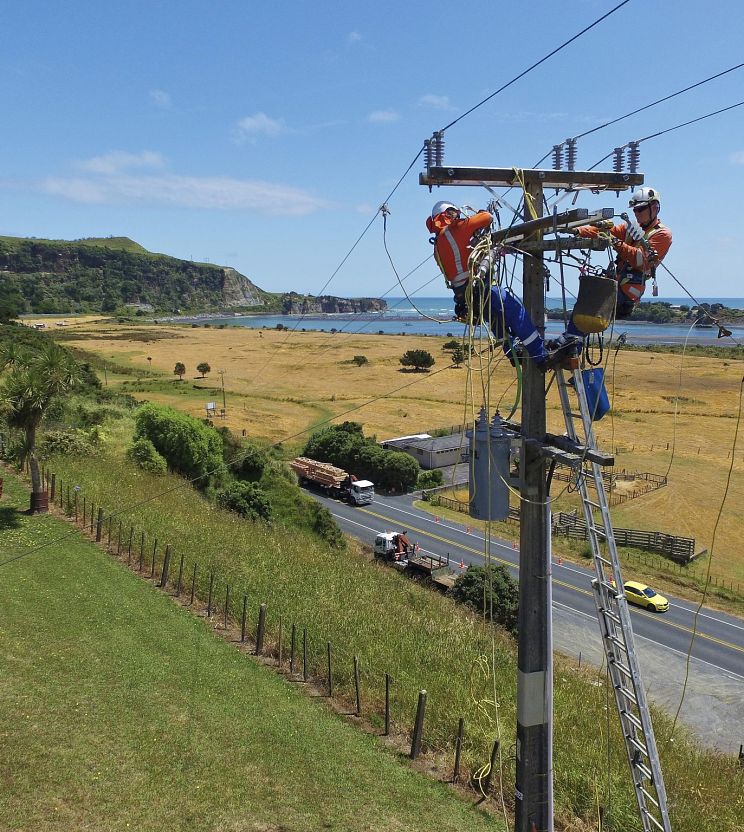Our service
We’re an electricity distribution company. This means we own, manage and maintain the network lines that connect you to the national grid and make electricity available wherever you are in our region.

We’re an electricity distribution company. This means we own, manage and maintain the network lines that connect you to the national grid and make electricity available wherever you are in our region.
Our network includes the power lines, poles, cables, substations, transformers, and other infrastructure that make this happen.
Through your electricity retailer, we also charge you for the costs of Transpower bringing the power into our area, as well as Electricity Authority levies.
The amount of money we charge our customers, and the reliability standards of the electricity supplied are regulated by the Commerce Commission.
There are four key steps to get electricity to you:
Generally each of these steps is handled by different companies and the overall system is governed by legislation.
To make sure you’ve got a reliable power supply and to prevent overloading the poles and lines that carry it, we sometimes manage the load on our network.
Similar to ‘rush hour’ on the roads, there are times — usually cold winter mornings or evenings, or the middle of summer — when everyone’s using their lights, appliances, air conditioning, pumps, and machines at once.
One way to cope with these relatively short ‘rush hour’ periods is to expand our network capacity — much like adding lanes to handle the traffic. But this is expensive, especially when the additional capacity is not needed 98% of the time.
We think it makes better sense to use other options, such as load management, where we reduce the load on our network during ‘rush hour’ periods or at times of emergency events.
We do this by turning off appliances connected to load management (typically hot water cylinders) during these times, and through pricing that encourages off-peak electricity use.
Reducing and managing the load on our network at those times also reduces the costs passed on to you and helps in emergency events when the priority is to keep customers connected.
How do you tell if we’re load managing? If your meter is flashing on pulse 2, we’re load managing your connection.
Download our brochure on Load Management for more information: